Having Enough in Retirement

We’ve had several prospective clients reach out to our practice in recent weeks. All have been within five years of retirement, and all asked us to help them address a key concern: Do I have enough money to retire?
“Do I have enough money to retire?” We’ve helped hundreds of individuals and couples to answer this essential question.
We’ve helped hundreds of individuals and couples to answer this essential question.
Retirement planning is complex and the laws around IRAs and other tax-advantaged retirement vehicles change frequently. Few areas offer financial advisors greater opportunities to create value for their clients than the development of retirement success strategies. Making retirement possible—and making retirement work—have been a central focus points of our practice since the 1980s.
When prospective clients approach us with retirement questions, what they most want is to gain confidence that they will have enough to retire, live the way they want, and never run out of money. How do we answer these questions? Always in the same way—we have to run the numbers. Often, our analysis reveals that an individual’s situation tends toward one of three basic frameworks:
1. Those who have behaved prudently and have accumulated more than enough to retire comfortably. In many cases, they approach us with profound worry about whether they will succeed. Using hard numbers, we guide them toward having confidence about their retirement success.
2. Those who have developed substantial resources and have the potential to make a successful retirement transition, but who need to make meaningful changes to reach their goals. Often these situations are complex, with financial assets, business interests, and real estate investments that need to be carefully unwound. For this set of clients, our job is to work with attorneys and CPAs to develop a carefully sequenced and tax-aware strategy.
3. Those whose financial resources fall short of what they will need to live the lifestyle they want in retirement. Ironically, these individuals often arrive with a false confidence. Here, our first task is to inject a dose of realism, and then to guide them through the difficult task of negotiating with themselves to find solutions.
In every case, our goal is to provide accurate guidance toward the best realistic financial outcome. Our retirement-readiness process has three key elements:
1. A success scenario. We start by examining a person’s existing situation, taking into account their health, family needs, sources of income, and investment capital. Next, we develop multiple possible scenarios with varying risk levels, retirement dates, potential part-time work, and income goals from which the clients can choose the best answer for their families and their lives. (There is truly no one-size-fits-all solution.) Some may be best served by an immediate retirement at a reduced income level, others by delaying retirement until a later date, and still others by a staged-in retirement with continued part-time employment. Some should choose Social Security early retirement at age 62, while others should wait until age 70 to claim their benefits.
2. Optimize tax outcomes. Some high-income, self-employed persons can adopt a defined-benefit pension plan that allows large pre-tax savings during their final working years. Others may want to elect capital gains tax treatment on employer stock as part of a qualified plan to IRA rollover. Perhaps a business can be sold on an installment basis, to spread the tax liability over multiple years and reduce the tax rate paid. Sometimes it’s better to start taking distributions from your IRAs before age 70½.
3. Longevity planning. For a married couple (both aged 65), there is a 50% probability that at least one partner will live to age 95. This means that sustaining your lifestyle in retirement could literally be a 30-year plan! One of the biggest mistakes people make in retirement is adopting lower-risk investment strategies that fail to meet the reality of longer, healthier lives. We help clients to balance the trade-offs between short-term volatility and long-term financial returns.
Once you retire, you lose the ability to replace lost capital. This fact causes a fair amount of stress for those approaching retirement, usually due to the fear that a volatile market could deplete a significant portion of what they’ve accumulated. Other dangers for new retirees and those nearing retirement include significant changes in health and overspending, especially in the first few years of retirement. This is why, as we progress through the financial planning process, we factor in the inevitable uncertainty about the economic future as well as unforeseen life events and balance them with a sensibly risk-managed approach.
The current markets represent a particularly dangerous time to move into retirement. Many of today’s best-performing assets are priced based on speculation and wishful thinking instead of durable economic advantage. Cryptocurrencies, the FANG stocks, and growth stocks in general—there is a minefield of overpriced assets to avoid. Buy the wrong things today, and you could suffer catastrophic losses similar to those investors suffered when the tech bubble collapsed.
On the other hand, certain market sectors represent fair long-term value. These can help form the foundation for a prudent long-term retirement portfolio.
If you know someone who needs retirement success advice, whether they’re young (starting early is a huge advantage—remind the kids) or on the verge of retiring, we’d love to talk with them. Helping smart people retire with confidence lies at the very core of what our firm has done for almost 30 years. We have both the tools and the experience to navigate through all of the pitfalls.
For more information, please download our Successful Retirement Series, with white papers on accumulation, transition, and sustainable distributions, or reference our one-page summary on retirement issues.
By James S. Hemphill, CFP®, CIMA®, CPWA®/ Managing Director & Chief Investment Strategist
Jim has been a CERTIFIED FINANCIAL PLANNER™ professional since 1982. Jim specializes in complex wealth transfer and retirement transition strategies and coordinates TGS Financial’s inves
Please remember that past performance may not be indicative of future results. Different types of investments involve varying degrees of risk, and there can be no assurance that the future performance of any specific investment, investment strategy, or product (including the investments and/or investment strategies recommended or undertaken by TGS Financial Advisors), or any non-investment related content, made reference to directly or indirectly in this article will be profitable, equal any corresponding indicated historical performance level(s), be suitable for your portfolio or individual situation, or prove successful. Due to various factors, including changing market conditions and/or applicable laws, the content may no longer be reflective of current opinions or positions. Moreover, you should not assume that any discussion or information contained in this article serves as the receipt of, or as a substitute for, personalized investment advice from TGS Financial Advisors. To the extent that a reader has any questions regarding the applicability of any specific issue discussed above to his/her individual situation, he/she is encouraged to consult with the professional advisor of his/her choosing. TGS Financial Advisors is neither a law firm nor a certified public accounting firm and no portion of this article’s content should be construed as legal or accounting advice. A copy of the TGS Financial Advisors’ current written disclosure statement discussing our advisory services and fees is available upon request.


